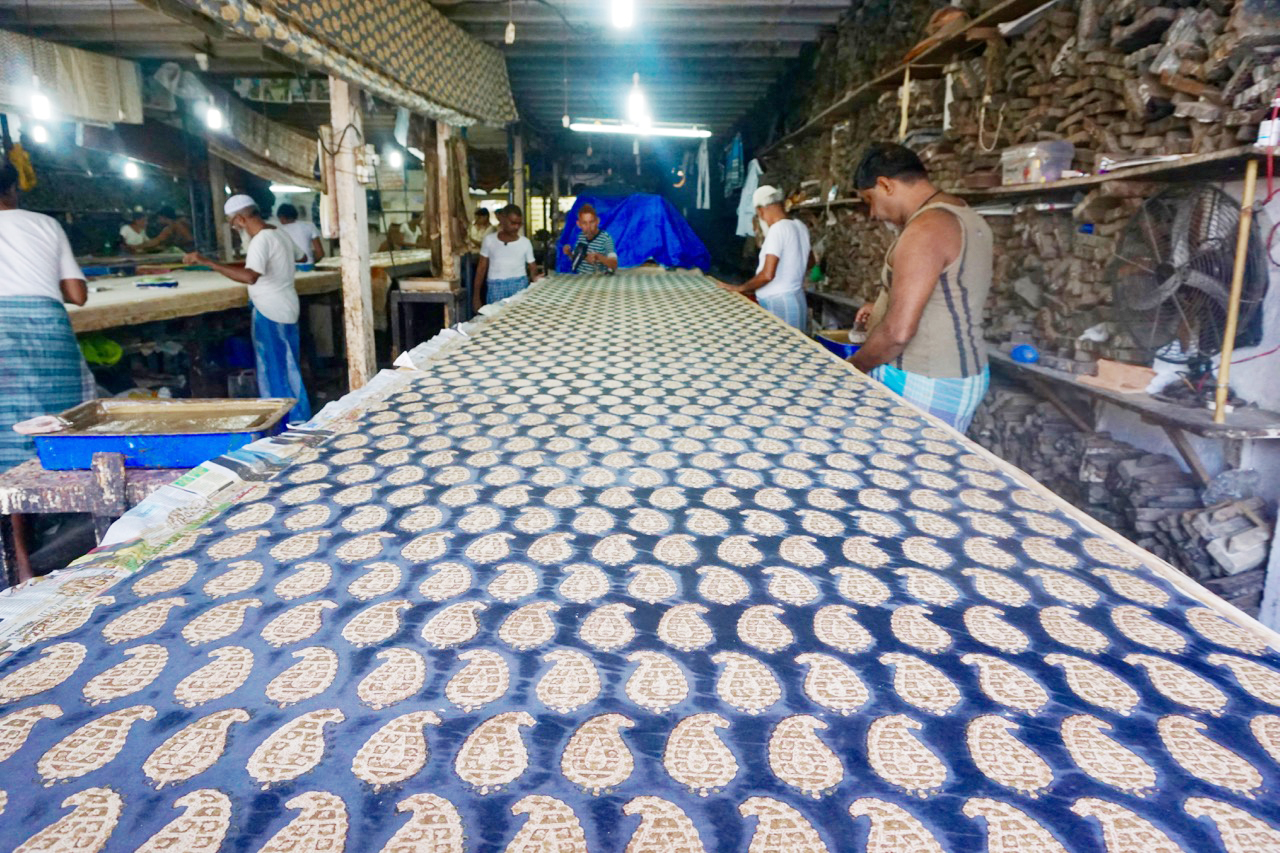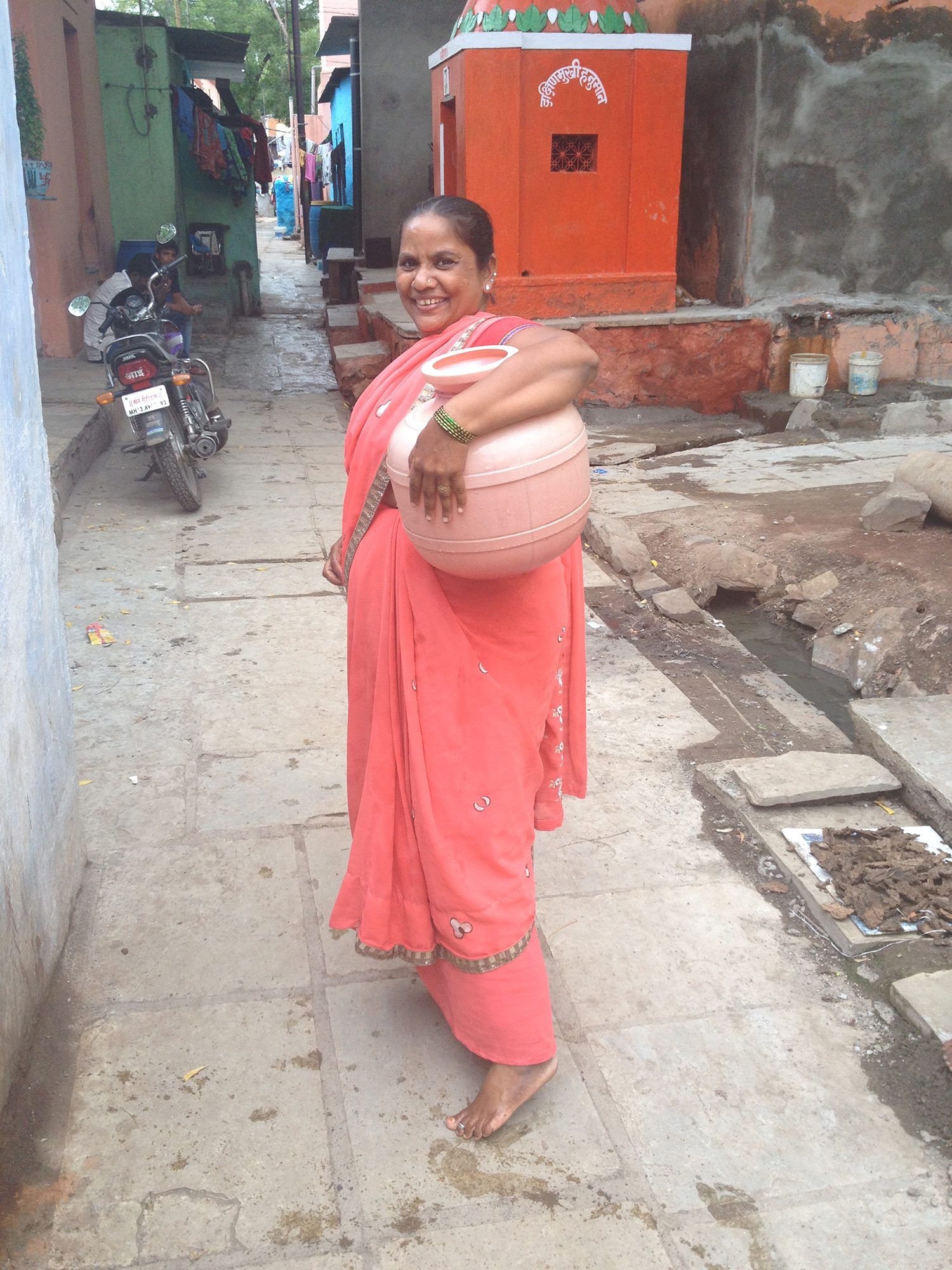12 04 17 — 15:54

During the world exhibition we deal with the traditional Indian cloth, the Saree, a five to six meter long rectangular cloth which basically consists of three parts: the paluv (also pallu), the shoulder part which emphasises the female shoulder, the „corpus“ and the decorative border. Under the Saree women wear a long undercoat; The upper body is covered with a short and tight blouse called choli.
The history of the Saree can be traced back to 2800-1800 BC and belongs to one of the oldest garments in the world. Originally Hindus believed that only a fabric that had not come in contact with a needle was really „pure and clean“. Therefore, Indian women wore only this traditional garment. An old story illustrates the origin of the Saree: a man in love wanted to weave a dress for his beloved. But at night he fell asleep, and therefore a very long cloth – the Saree – came out.
There are many different ways to wear a Saree differing from status, culture and origin of the woman. Feminine attributes such as a narrow waist or bulging hips are part of the culture of the Saree and an important part of the Indian female image. The Saree has always been an expression of female identity and beauty. It has been worn in many different ways and draped differently by individuals.
Today, more and more Indian women are opting for Western clothes. For this reason, a number of initiatives are trying to revive wearing the Saree. In the course of the exhibition, we will also explore the sociocultural motives on the digital level. We show different personal stories that are often hidden – along with their very specific cultural and social background.
The decision whether to wear a Saree does not mean more than a simple „fashion statement“: Most women – especially in rural India – still wear the Saree every day. In contrast to many traditional women, many modern Indians wear Western clothes as a social and political statement and as a sign that women are allowed to make personal choices. There are cases that a woman wears western clothes when her traditional family (especially the mother-in-law) is absent and wears a Saree when she is with her family. This shows that the Saree is not only a culturally, but also a strong socially motivated statement. And it is a subtle statement as well. The rebellion is a domestic push pull of traditional values.
For our Saree project, we are interviewing women mostly from Mumbai. The megacity blends all different cultures and backgrounds of Indian communities within a limited space. We want to show the various facets and social nuances of all women and reveal their stories behind them.

Implementation of our concept in the glass palace:
RESEARCH:
We analyse the origin and the history, the different styles / drappings and the cultural significance of the Saree. In this context, we especially refer to the origin and the different „localisation“ of the Saree within India. The variety of colors, the handloom techniques, symbols and religious significance vary within India. In the following, we ask ourselves if only women wear the Saree or also men, and in which ways the Saree can be understood as an art form.
THE GEOGRAPHY OF SAREE:
We create a sociocultural map (Mapping the Saree) of the Saree and analyse the different styles within selected areas in India. The Saree is perceived as a socio-cultural type of clothing which is closely connected to the different rites and traditions within Indian society.
EVERY SAREE TELLS A HISTORY:
We collect and show „Saree stories“ on the GLASPALÄSTE.org website and our blog before and during the exhibition.
INTERACTIVITY ON LOCATION:
The visitors can actively participate within the glass cube: They have the possibility to wrap a Saree by themselves with the help of simple instructions.
DESIGN OBJECTS:
We develop new objects as an artistic and sociocultural impulse made from different Saree fabrics.
